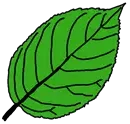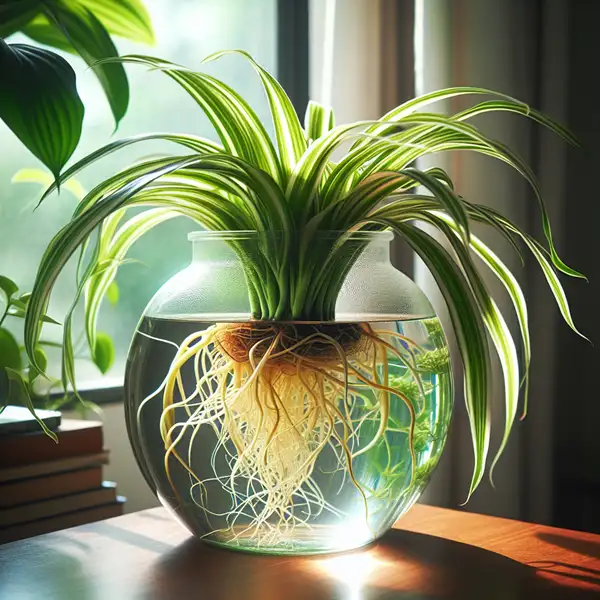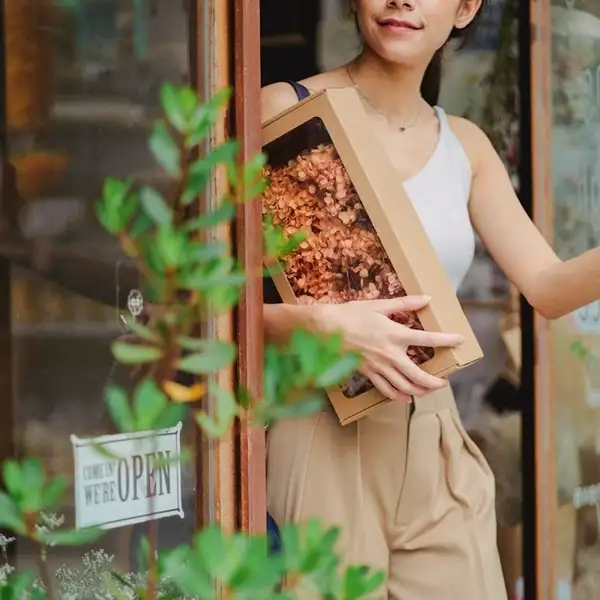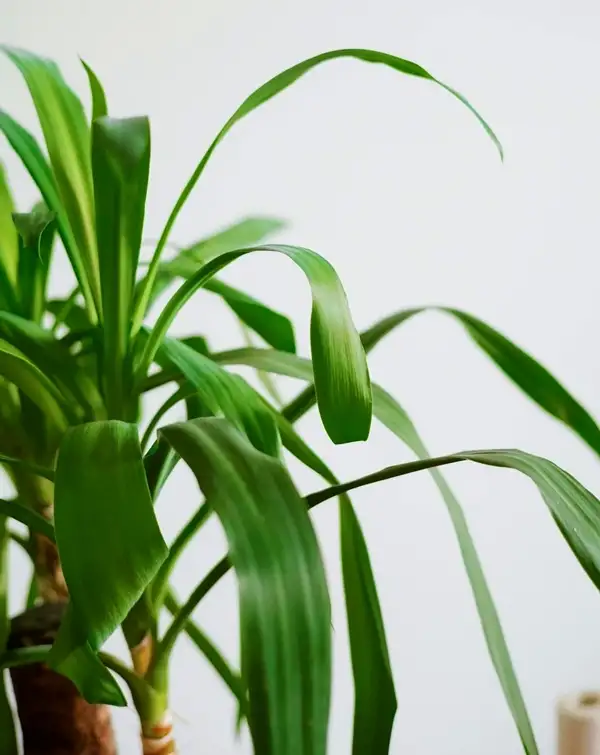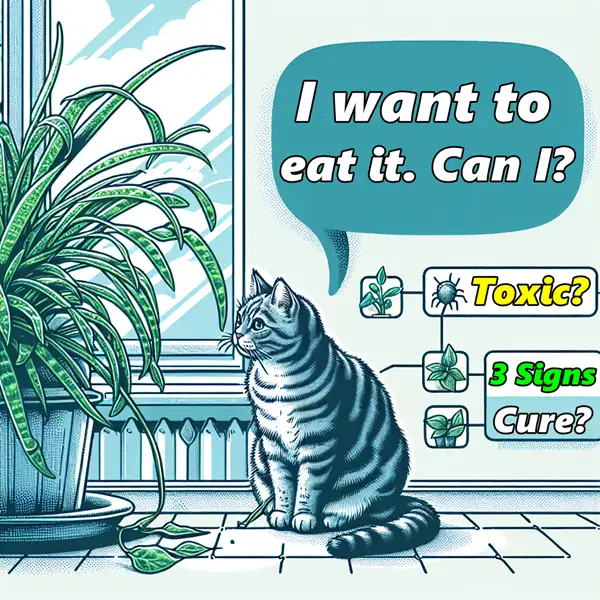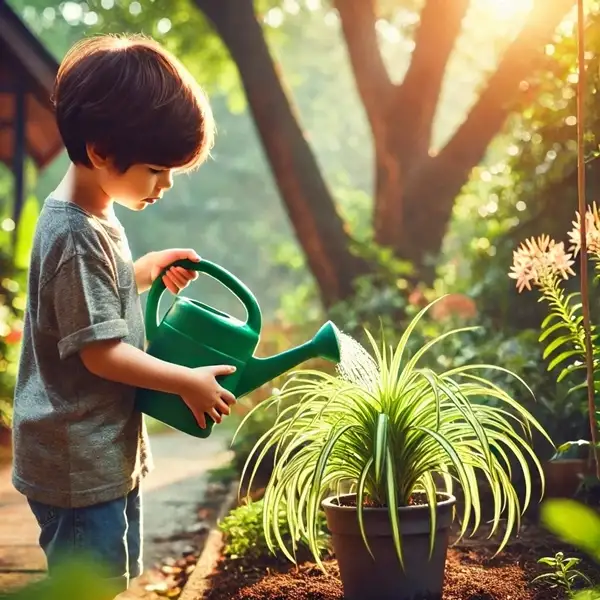Key Takeaways
| Key Takeaway | What You’ll Learn |
|---|---|
| Spider Plant Origins | Discover where spider plants naturally thrive and why it matters. |
| Adaptability | Explore the surprising resilience of spider plants in different conditions. |
| Hydroponic Growth | Can spider plants live in water entirely? Find out the answer. |
| Propagation in Water | How long can spider plants live without soil? The results may surprise you. |
| Benefits & Drawbacks | Uncover the advantages and potential challenges of water-based growth. |
| Expert Tips | Essential care tips to ensure successful water propagation. |
| Long-Term Viability | Is a hydroponic setup sustainable for spider plants in the long run? |
Spider Plants and Their Natural Habitats
Spider plants or Chlorophytum comosum are native to the subtropical regions of Southern Africa. Known for their ornamental appeal & air-purifying qualities they thrive in well-drained soil & partial shade in their natural habitats.
- These resilient plants are highly adaptable & flourish in a range of environments whether indoors or outdoors.
- Their hardiness is impressive as they can tolerate temperatures between 35°F & 90°F without sustaining significant damage.
- In the wild, they usually grow in moist woodland settings which indicates adequate access to water but certainly not an entirely aquatic existence.
- Even though they prefer humid environments, their durable structure enables them to survive periods of drought or caloric limitation, provided they are not overwatered.
Coupled with its leading reputation as one of the easiest houseplants to maintain, its popularity among gardeners and novices alike is clear.
Can Spider Plants Live in Water?
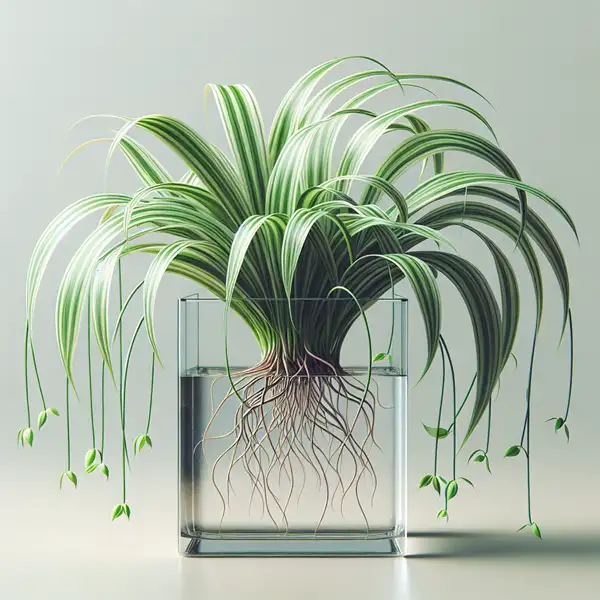
Hydroponics is a method of growing plants without soil & using nutrient-rich solutions typically mixed with water. In simple terms, it seeks to recreate the necessary elements found naturally, but instead through man-made substances.
While inherently diverse and accommodating to most types of plants, hydroponic cultivation does have certain peculiarities. Plants can grow very successfully under this system, provided the right conditions are met—chief among them being appropriate oxygen levels in the root zone. Excessive water saturation could lead to root rot & ultimately, plant death.
Despite this adaptive resilience, spider plants are considered semi-aquatic meaning they cannot stay submerged indefinitely. However, this does not mean they cannot survive for some time. Experiments suggest that spider plants can remain submerged for anywhere between four to six weeks, provided they are primed beforehand in a healthy state for maximum beneficial impact.
Propagation of a Spider Plant in Water
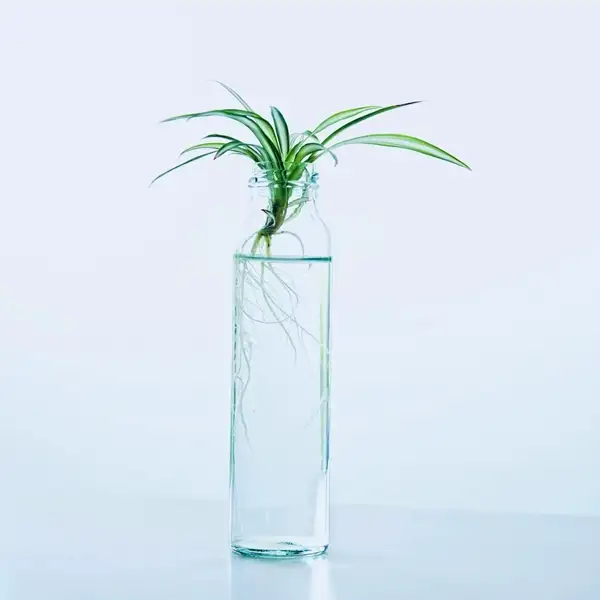
A study into the lifespan of spider plants reveals fascinating insights. Suffice it to say, their survival is very much dependent on the environment, particularly the presence of nutrients.
- For instance, cuttings can survive for several months in water with limited signs of deterioration mainly due to a lack of necessary nourishment which makes them weak & vulnerable to disease.
- On the flip side, with proper care- including consistent feeding & adequate light exposure – spider plants can thrive for upwards of two years in a hydroponic setup.
- This provides clear evidence of their suitability for this setting over the long term, especially when grown from scratch using root structures.
However, it is important to note that in all cases, maintaining balance is critical. Neither ‘drowning’ roots nor starving them is sustainable. Most significantly, providing access to oxygen is essential; without it, the plant will inevitably starve and suffocate.
4 Benefits and 4 Drawbacks of Growing Spider Plants in Water
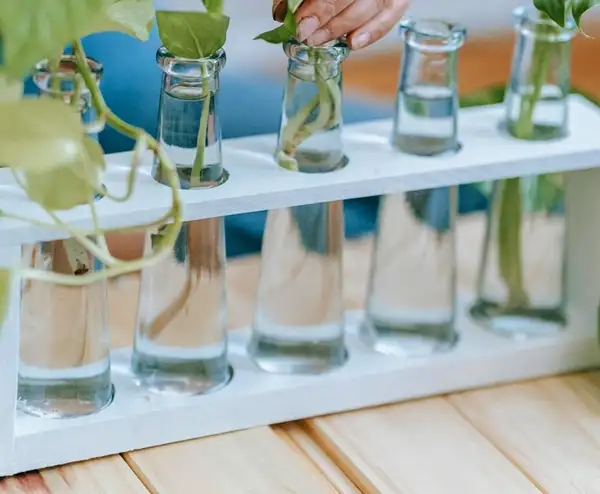
| Benefits 😊 | Drawbacks 😟 |
|---|---|
| Eliminates soil mess, reducing the risk of soil-borne pests and diseases. | Potential for limited growth and reduced flowering compared to soil cultivation. |
| Allows for unique and decorative display options with transparent containers. | Requires regular water changes to prevent stagnation and algae growth. |
| Provides clear visibility of root health, making it easier to monitor. | Risk of root rot if water quality is not maintained properly. |
| Facilitates easier propagation by observing root development in water. | May necessitate nutrient supplementation to compensate for the lack of soil nutrients. |
5 Do’s and 5 Don’ts For Maintaining Spider Plants in Water

Transitioning spider plants to water is relatively straightforward.
| Do’s 👍 | Don’ts 👎 |
|---|---|
| Use a transparent container to monitor root health easily. |
|
| Change the water weekly to prevent algae buildup & ensure oxygenation | Don’t expose your plant to direct sunlight, which can promote algae growth & harm it |
| Add a diluted & balanced liquid fertilizer monthly to provide essential nutrients |
|
| Place the plant in bright, indirect light to support healthy growth | Avoid placing the plant in drafty areas or near temperature extremes |
| Trim any dead or decaying roots promptly to maintain plant health | Don’t overcrowd your container with multiple plants, which can lead to competition for resources. |
Are Water-Based Habitats Suitable for Long-Term Growth?
Spider plants have shown resilience in long-term aquaponic systems when the right balance of nutrients, oxygen, and light exposure is maintained.
On the downside, you may notice a reduction in flowering, leaf size, and the production of baby spiders. If these factors are significant to you, sticking with their traditional soil-based home might be a better option. However, overall, they are largely viable in a variety of settings.
Ultimately, it comes down to personal preference & purpose for which they are being grown. Whether you prefer the simplicity of hydroponics or the familiar rituals of potting & repotting, the choice is yours. In either case, their hardy & resilient nature makes them one of the best houseplants to grow & enjoy.
Quick Comparison: Soil vs. Water Growth for Spider Plants
| Aspect | Soil Growth 🌿 | Water Growth 💧 |
|---|---|---|
| Growth Rate | Typically faster with more robust foliage and frequent flowering. | Generally slower growth with potential for smaller leaves and fewer flowers. |
| Maintenance | Requires periodic repotting and monitoring for soil pests. | Needs regular water changes and monitoring for algae or root rot. |
| Aesthetics | Traditional look with various pot options. | Modern, minimalist appearance with visible roots in clear containers. |
| Pest Risk | Higher risk of soil-borne pests and diseases. | Lower risk of pests; however, water quality must be maintained to prevent issues. |
| Nutrient Access | Natural access to soil nutrients; fertilization may be needed occasionally. | Relies entirely on added nutrients; regular fertilization is essential. |
Final Thoughts
So, “Can Spider Plants Live in Water” permanently in a hydroponic setup? The answer is YES, but only when proper care, nutrient management, and routine maintenance are maintained. Spider plants are hardy and can be nurtured in such an environment with the right setup.
Frequently Asked Questions
Can we grow Spider plants in water with fish?
Yes! Spider plants can coexist with fish in aquariums or aquaponic systems. They absorb excess nutrients from fish waste, improving water quality. Ensure roots get oxygen to prevent rot.
Can a spider plant live in water only?
Yes! With regular nutrient feeding & weekly water changes. Proper oxygen, light & nutrients are essential for long-term survival.
Which plants grow best in water?
Pothos, lucky bamboo, peace lilies & philodendrons are ideal due to strong roots & efficient nutrient absorption.
How to grow spider plants without soil?
Place a healthy cutting in a clear container with clean water & hydroponic nutrients. Change water weekly & ensure good light exposure.
How long can spider plants live in water?
They can live for years with proper care including regular feeding, water changes & adequate light.
Can we put spider plants in water permanently?
Yes, if roots receive oxygen, nutrients are added regularly & water stays clean. They may flower less than in soil but remain resilient.
How to grow spider plants in water?
Use a transparent container for easy monitoring. Submerge roots in water with hydroponic nutrients, keeping the base above water. Change water weekly & provide sufficient light.
Do spider plants need soil?
No! They can thrive in water with proper nutrients, oxygen & regular maintenance.
